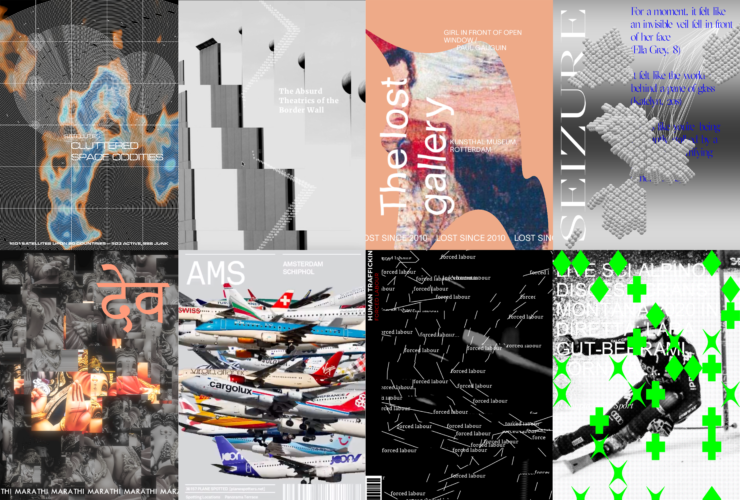
Workshop by OPENRNDR × Politecnico di Milano
This year, we had the pleasure to organise a week-long Workshop with RNDR co-founder Edwin Jakobs, also the creator of OPENRNDR, an “open-source framework for creative coders”. The workshop, held from Feb 17th to Feb 21st, introduced the basics of creative coding and OPENRNDR to our Final Synthesis Design Studio students and challenged them to create a generative and data-driven poster.
The goal of the workshop was to introduce designers with creative coding and the idea of using coding as material for personal and creative expression.
The workshop was organised with frontal lessons in the first two days, to introduce some technical aspects of the framework, and group work for the rest of the week. The teamwork was focused on data scraping from online sources like Google News and DuckDuckGo, then the collected data were used to generate 20 different posters on a topic relevant to the group. The 20 posters, instead of being produced ad-hoc with traditional graphic software, would have been generated randomly by a coded set of rules and data sources without being retouched by hand.
The results are 8 sets of 20 posters depicting various topics, from the more niche like “airplane spotting”, to the more politically engaged like “human trafficking”.
Space Oddities

Since 1957, more than 6000 satellites have been launched into space. They are like oddity invaders into the peaceful outer space, becoming debris while serving human purposes. Group 1 goal is to make people aware of this and to show it to those who cannot see it in daily life.
Border Friction

Borders encapsulate the leading worldwide challenges of democracy and humanity. Group 2 wants to graphically convey the perception of separation through posters based on border-related Google news, to communicate the ever-going disputes and distress related to borders.
The Lost Gallery

Art theft is usually done for resale or for ransom, but only a small percentage of stolen art is recovered. Group 3 with these posters wants to convey how stolen artworks can become just memories when they are never uncovered and how this phenomenon results in a loss of culture.
Seizures

Around 50 million people are suffering from epilepsy. Still, this neurological disease is not fully understood due to the inexplicability of its manifestations. Group 4 project aims to explain what epilepsy is by highlighting the words and symptoms of people who live this pathology.
Perceptions of God

Group 5 explored the boundaries between languages and ideas, by examining and visualizing the word/idea of “God” and how it is portrayed in 20 different languages. The aim is to show how every culture is diversified by different entities and how the concept of supreme power transcends language barriers.
Airplane Spotting

Airplane spotting is like bird watching in the modern age. It’s often seen as an obsessive collection in a digital environment. Group 6 aims to visualize data crowds of airplane spotting images of five different airports and their relative air traffic.
Human Trafficking

Human trafficking happens every day, in all its different types: sex, labour and organ trafficking. Group 7’s project wants to transmit the different emotions the victims encounter with different graphic notations: e.g. sharp lines representing the constant violence or organic lines representing the dynamic nature of the human body.
Poetic Justice

Group 8 shows the reduction of freedom of the press in different nations from all over the world. Headlines, sentences and images from articles were extracted and covered by a generative pattern, with shapes that refer to economic, political and legal scores of the countries.

